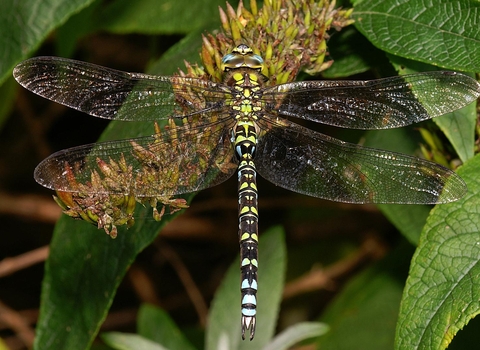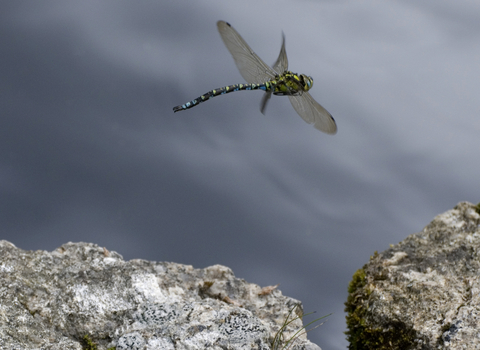
©David Longshaw

©Zsuzsanna Bird
Southern hawker
A common dragonfly of ponds, lakes and canals near woodland, the Southern Hawker can be seen patrolling the water or 'hawking' through woodland rides. A fast-flying species, it will catch its prey mid-air.
Scientific name
Aeshna cyaneaWhen to see
June to OctoberSpecies information
Category
Statistics
Length: 7cmCommon.
